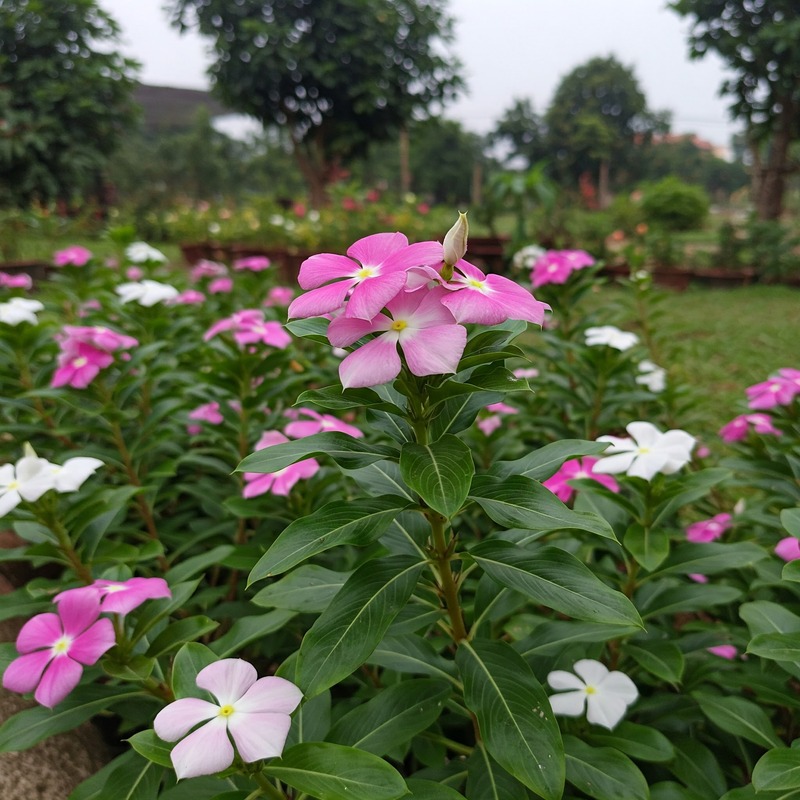Benefit of Catharanthus roseus (Kotomisi), a vibrant flowering plant native to Madagascar but also found and used in Suriname, holds a remarkable place in both traditional medicine and modern pharmacology. Known for its potent alkaloids, this plant has significantly contributed to the development of life-saving cancer treatments. Furthermore, it has a long history of traditional use in managing diabetes and other health conditions. Indeed, its diverse applications make it a subject of intense scientific interest.
The Power of Alkaloids: Vinblastine and Vincristine
The true benefit of Catharanthus roseus (Kotomisi) lies within its complex chemical composition. Specifically, it contains alkaloids like vinblastine and vincristine, which have revolutionized cancer therapy. Firstly, these compounds disrupt cell division, effectively halting the rapid proliferation of cancer cells. Consequently, they are crucial components of chemotherapy regimens for various cancers, including leukemia, lymphoma, and Hodgkin’s lymphoma. Moreover, their discovery underscores the importance of biodiversity in pharmaceutical research.
Traditional Uses: Diabetes and Beyond
In addition to its cancer-fighting properties, Catharanthus roseus (Kotomisi) has a rich history in traditional medicine. For example, in many cultures, including in Suriname, it’s used to manage diabetes. Specifically, traditional practitioners prepare infusions from the leaves and roots, believing they help regulate blood sugar levels. Additionally, it is used to treat skin conditions, high blood pressure, and menstrual irregularities. However, it is important to note that scientific validation of these traditional uses is still ongoing.
When not to use Catharanthus roseus:
- Pregnancy and breastfeeding:
- This plant is strictly contraindicated during pregnancy and breastfeeding due to its potential to cause severe harm to the fetus or infant.
- Individuals with liver or kidney disease:
- The potent alkaloids in Catharanthus roseus can put additional strain on the liver and kidneys, potentially exacerbating existing conditions.
- Individuals with low blood cell counts:
- Because of the plants affect on cell division, people with low blood cell counts should not use this plant.
- In conjunction with other medications:
- Catharanthus roseus can interact with various medications, including those for blood pressure, diabetes, and cancer.
- Combining it with other drugs can lead to unpredictable and potentially dangerous side effects.
- General Toxicity:
- It is important to remember that the entire plant is poisonous. Ingestion of any portion of the plant can cause serious health issues.
Key safety points:
- Medical supervision is essential: The alkaloids derived from this plant are used in carefully controlled pharmaceutical preparations. Self-medication with the whole plant is strongly discouraged.
- Potential side effects: Catharanthus roseus can cause numerous side effects, including nausea, vomiting, nerve damage, and cardiac problems.
- Drug interactions: This plant can interact negatively with prescription medications.
Scientific Research and Evidence
While traditional knowledge provides valuable insights, modern science is crucial for understanding the mechanisms of Catharanthus roseus (Kotomisi). To illustrate, numerous studies have investigated its hypoglycemic effects, with some showing promising results. Similarly, research continues to explore its potential in treating other conditions. Thus, while the plant’s anticancer properties are well-established, more research is needed to fully understand its broader therapeutic potential.
Cultivation and Sustainability
Because of its medicinal importance, Catharanthus roseus (Kotomisi) is cultivated in various parts of the world. However, sustainable harvesting and cultivation practices are essential to ensure its continued availability. Therefore, efforts are being made to promote responsible cultivation that protects natural habitats and supports local communities.
Conclusion
In summary, Catharanthus roseus (Kotomisi) is a remarkable plant with profound medicinal value. Ultimately, its contribution to cancer treatment and its traditional use in managing diabetes make it a subject of ongoing scientific and cultural significance. Finally, continued research and responsible use will ensure that this plant’s benefits continue to serve humanity.


